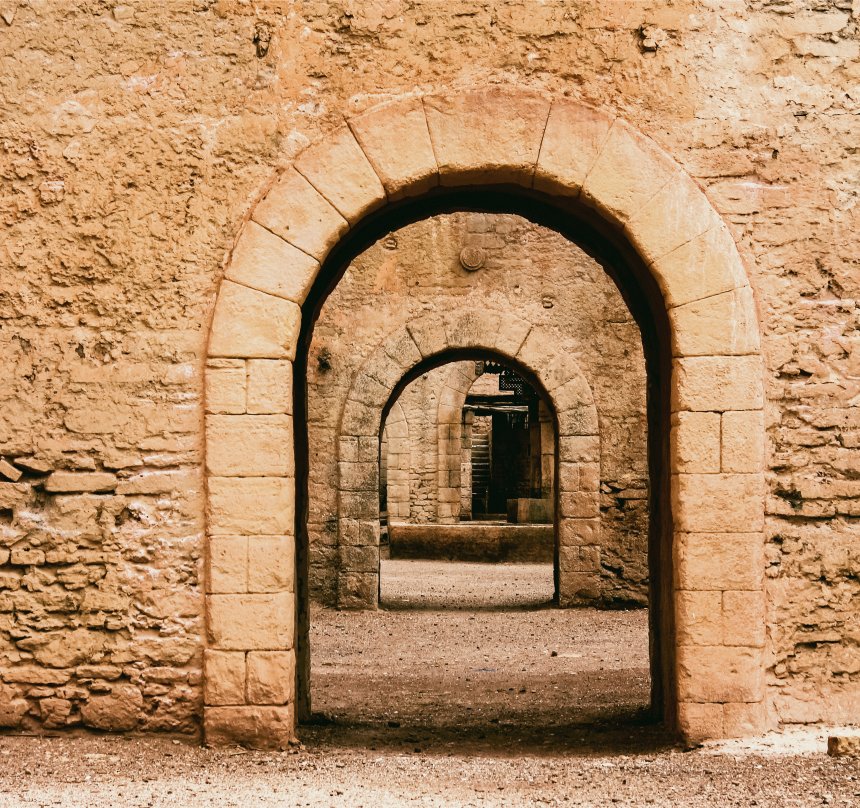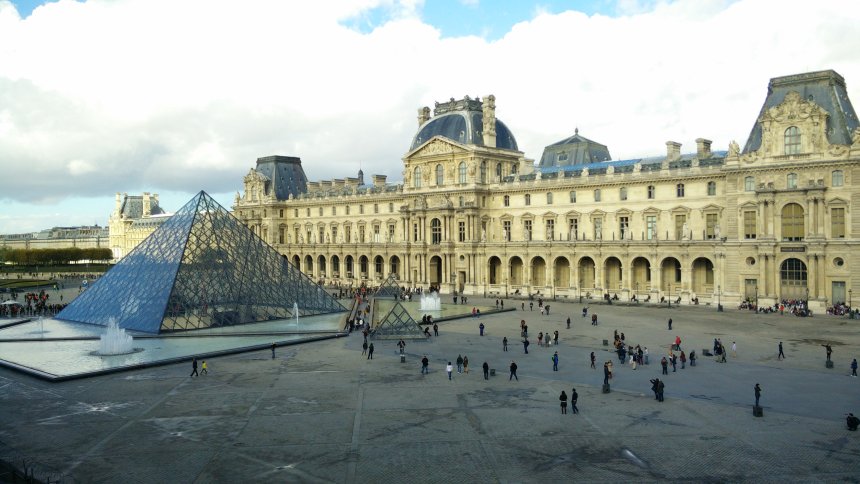Rock: granite
Type: plutonic igneous rock
Age: 300 Ma
Quarry: Le Houx in Languédias (Côtes d’Armor)
A Fine Granite
This granite, with a fine texture, is composed of feldspars (plagioclase, microcline), quartz, muscovite (white mica), and a bit of biotite (black mica). Along with its neighbor, the Hinglé granite, it belongs to a large batholith (from the Greek “bathos” meaning depth and “lithos” meaning rock), the Bobital-Dinan massif, formed during the Variscan (Hercynian) orogeny.
Granite with or without an “e”?
Two spellings, two meanings. “Granit” (without an “e”) is a commercial term used by the extractive industry and refers to a hard, coarse-grained rock. “Granite” (with an “e”) is the term geologists use to name this plutonic igneous rock. This means that a “granit” does not necessarily mean “granite”! For example, the “petit granit” of the Ardennes refers to a limestone, a sedimentary rock.
Forming and quarrying
The elements of this arch were prepared by young stonemasons from the Apprentice Training Center (CFA) of UNICEM, located in Louvigné-du-Désert, about 70 kilometers north of Rennes (Ille-et-Vilaine). This Brittany campus benefits from a training site equipped with state-of-the-art teaching tools. Today, four programs are offered: quarry equipment maintenance, public works and handling machinery mechanics, laboratory technician, and finally, stone-cutting trades.

A Breton Gem
Granite is marketed under two names: “gris perle” (pearl gray) and “beige de Languédias.” These color variations depend on the degree of rock alteration. The beige is slightly altered, while the gray is sound. The “Languédias” quarry has been heavily exploited. It has the highest quarry density in Brittany and has been worked since the late 19th century. Granite was primarily used for paving stones for roadways and is now notably featured on the floor of the Cour Napoléon at the Grand Louvre in Paris.

